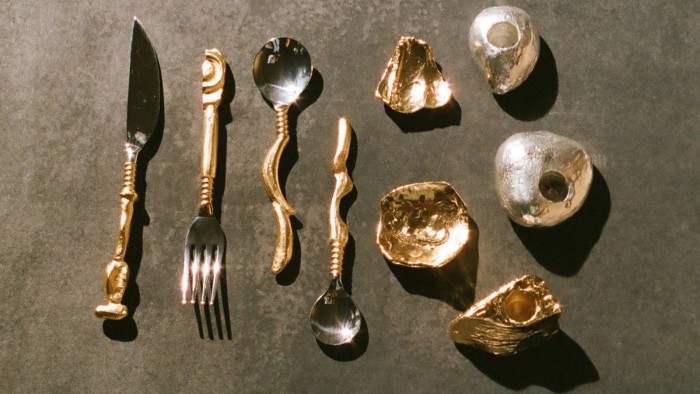Unlock the Editor’s Digest for free
Roula Khalaf, Editor of the FT, selects her favourite stories in this weekly newsletter.
The London-based artist Leo Costelloe describes their decorative cutlery sets as “make-up for a table”. With knives and forks that twist into wilting bows or spoons that are laced with ribbons, Costelloe’s silverware would certainly enhance even the plainest table setting. “It’s liminal – it can be used, but I like the idea of it being purely decorative,” they say.

Where once a celebratory feast might have been eaten with minimal, sleek cutlery, today’s dinner parties are being accented with more ornamental sets. This summer, Rosh Mahtani of London-based Alighieri launched a homeware collection inspired by ancient totems and rituals, including stainless-steel sets with ornate 24ct-gold-plated brass handles, complementing the often talismanic jewellery she creates. Sisters Laila and Nadia Gohar – who have played no small part in ushering in the trend for maximalist table settings with their brand Gohar World – make carved mother-of-pearl spoons, while Milan-based Natalia Criado creates sets with little hands extending from twisted stems, or teaspoons decorated with rose- and green-quartz balls.



Fancy cutlery in Europe dates back to the 16th century, when eating utensils evolved from being purely functional to decorative, and wealthy individuals would travel with their own sets. In the 19th century, brands such as Tiffany & Co commercialised and popularised ornate knives and forks, with the famous Chrysanthemum pattern and its art nouveau-style floral handles becoming the flatware of choice at high-society dinner parties.
More modern iterations include Elsa Peretti’s take on cutlery for Tiffany & Co, launched in 1984, which she named after the Italian city Padova and designed with figurative looped handles; and from Danish jeweller Griegst, whose founder first prototyped his famous Spira cutlery sets in 1980, before Georg Jensen put them into production in 2002-03 and reissued in 2021.

“I can describe our cutlery as a fusion of gothic Victorian and nostalgic ‘90s,” says Danish jeweller Orit Elhanati, who collaborated with the artist Conie Vallese on a cutlery collection this year. Made in Elhanati’s Copenhagen workshop by a team of mostly female goldsmiths, the knives, forks and spoons incorporate ornate floral motifs and minimalist clean lines, and are made from gold-plated sterling silver and studded with precious stones.
“The pieces are destined to be on display as decorative objects but are absolutely also designed to be used,” adds Elhanati. “However, they are adorned with diamonds and spinels – so they are definitely not dishwasher-friendly.”

